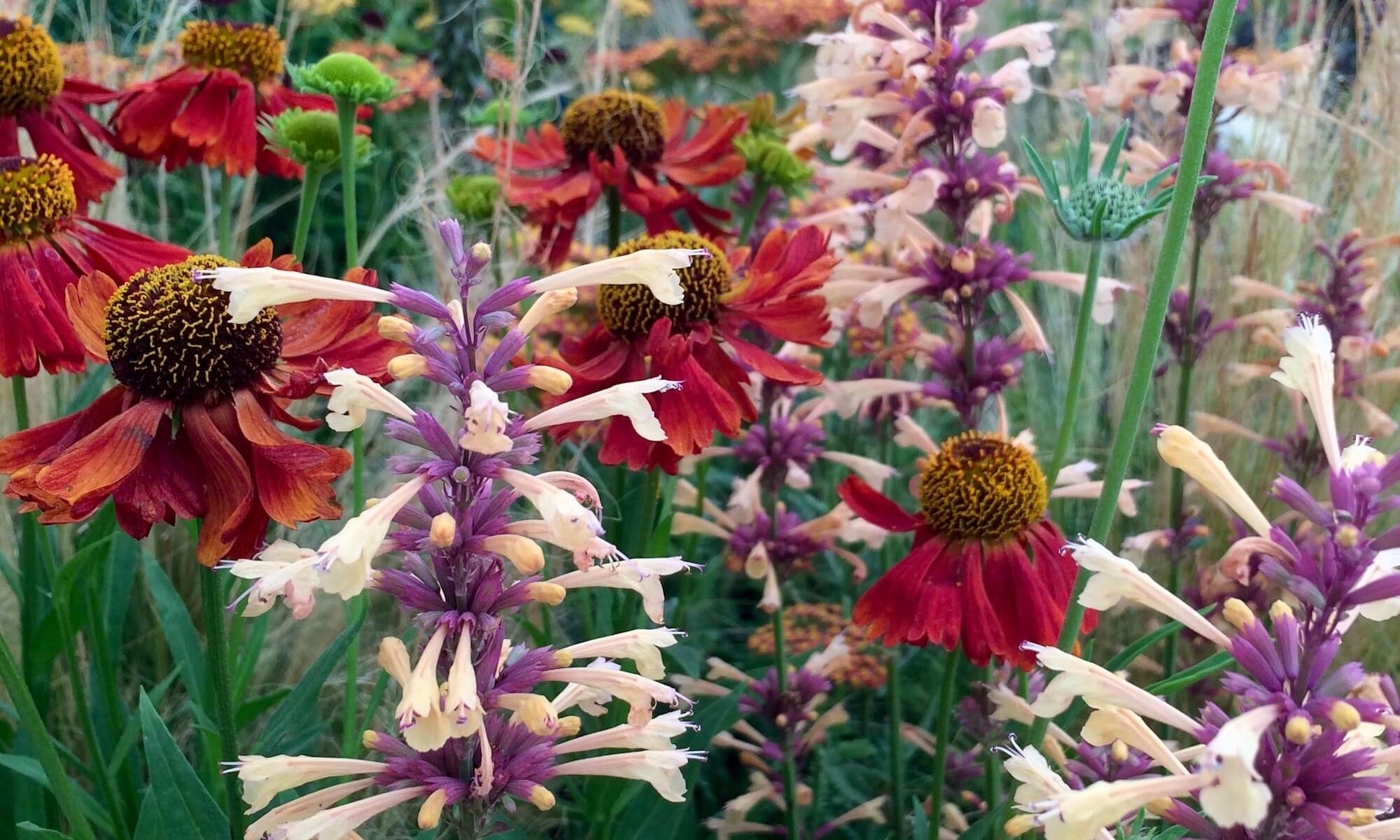
Red passion flowers, blazing joyfully in the early January sunshine during our visit to Florida, looked for all the world like a miracle to my Northern English eyes, tuned in to consider a single early snowdrop a delight.
It’s a bit of a minefield making sure which of the various scarlet red passionflowers you have before you. Passiflora vitifolia gets its name from the vine-shaped foliage. As its folk name is The Perfumed Passionflower you might expect me to have something to report about its fragrance but, not associating passionflowers with fragrance, it didn’t cross my mind to sniff it. It’s a vigorous vine when happy, able to reach 6 m (20 ft) if its surroundings force it to climb to reach sunlight. This smaller one was able to bask in the sunshine along a fence in the Naples Botanical Garden’s Brazilian Garden.
Passion flowers wow us with their intricate forms, even when their colours are relatively drab. This overhead view of a red passion flower could almost be a lesson in botany.

Three red-speckled styles that end in pale stigmas arch elegantly over at the top of the flower. The structure appears to balance on a creamy ovary in the centre, directly below; underneath that, five speckled filaments with green, pollen-bearing anthers attached. The pollen is held underneath – you can just glimpse it on the outer edges. Next, rings of eyelash-style filaments: long, dark red ones, with shorter ones in the middle, designed to make pollinators work hard enough for their nectar to withdraw with pollen on their backs (or heads, in the case of humming birds).
Underneath all that, five true petals, with five outer sepals beneath and between, all ten recurving backwards. My personal take on their colour? It’s the classic British fire engine red, more often described as crimson or scarlet.
Given its vine-like foliage, it would seem apt if this miraculous little plant went on to produce tiny bunches of grapes. Instead the fruits resemble dainty melons that some people describe as tasting like sour strawberries and others say are poisonous. It would be wise not to sample them unless you’re an expert.
Back in Darwen, our weather is far from tropical – we had big, leisurely flakes of snow on and off on Tuesday and those that stuck around have frozen since – so I’m tilting at windmills by choosing this for Cee’s Flower Of The Day. Well, not quite tilting, and not at windmills exactly, but can you see ‘waving a red passion flower at the snow’ catching on as an idiom?
Which reminds me to mention that Passiflora vitifolia is very tender, so prefers a tropical climate. Grown anywhere else it would need protection from cold, let alone the frost.
Of the four gardens we visited in Florida, the Naples Botanic Garden was my favourite, in tip-top condition and offering something for everyone. It wasn’t the one that pulled most on my heart strings, but more of that later.

What a stunner. I bought 6 different passion fruits at the market in Madeira and I now have lots of seedings. Maye I might find a vitifolia amongst them who knows? I know they are not hardy but I will meet that problem when I come to it. They all have such amazing flowers.
It is a beauty, but you’re right – I don’t think I’ve ever seen a passion flower I didn’t like.
That is a remarkable specimen. Those are more popular on the coast than they are in the inland valleys, but they do not bloom as well on the coast. They bloom better inland, but then die back to the ground in winter. I think people dislike how they die back, which is why they are less popular inland.. I think that it is better that they die back. Those that do not accumulate a thicket of old vines that must eventually get cut back anyway. What a mess!
There are a few different varieites here, an some are grown for fruit. The main fruiting variety has become a weed in some parts of Beverly Hills in the region of Los Angeles. It was rown there for fruit many decades ago, and it just wont die. Even after houses have been built and landscaped on the site, the vines still regnerate from underground parts that seem impossible to find and kill completely.
It was quite a sturdy looking flower. I had heard that some types of passionflowers can become a problem, especially in forests. I suppose any vigorous vine can get out of hand.
All I can say is, wowsah!
It’s not one you could miss.
Beautiful
Thanks.
Wow!
Sunglasses are needed for the flower, quite apart from anything else!
This flower is a dream. Thanks for posting this in January.
I’m glad you liked it.
Will they grow here, do you know? I had the everyday one in mauve/purple but I took a dislike to it after many years and uprooted it. It still tries to come through every year but I’m serious about getting rid of it so I hack it back. I would love a red one though.
You could try it in a conservatory that was kept warm during the winter. My sweetheart would probably suggest you could spray paint the blue ones 🙂
Oh what brilliant photos. Love that red. 😀
It’s pretty bold, isn’t it?
My goodness! What a vivid, red flower! I have yet to see one of these in some botanical garden. A very curious, looking flower!
It’s a lady in red of a flower!
Thank you for these lovely flowers!
My pleasure, Peter!